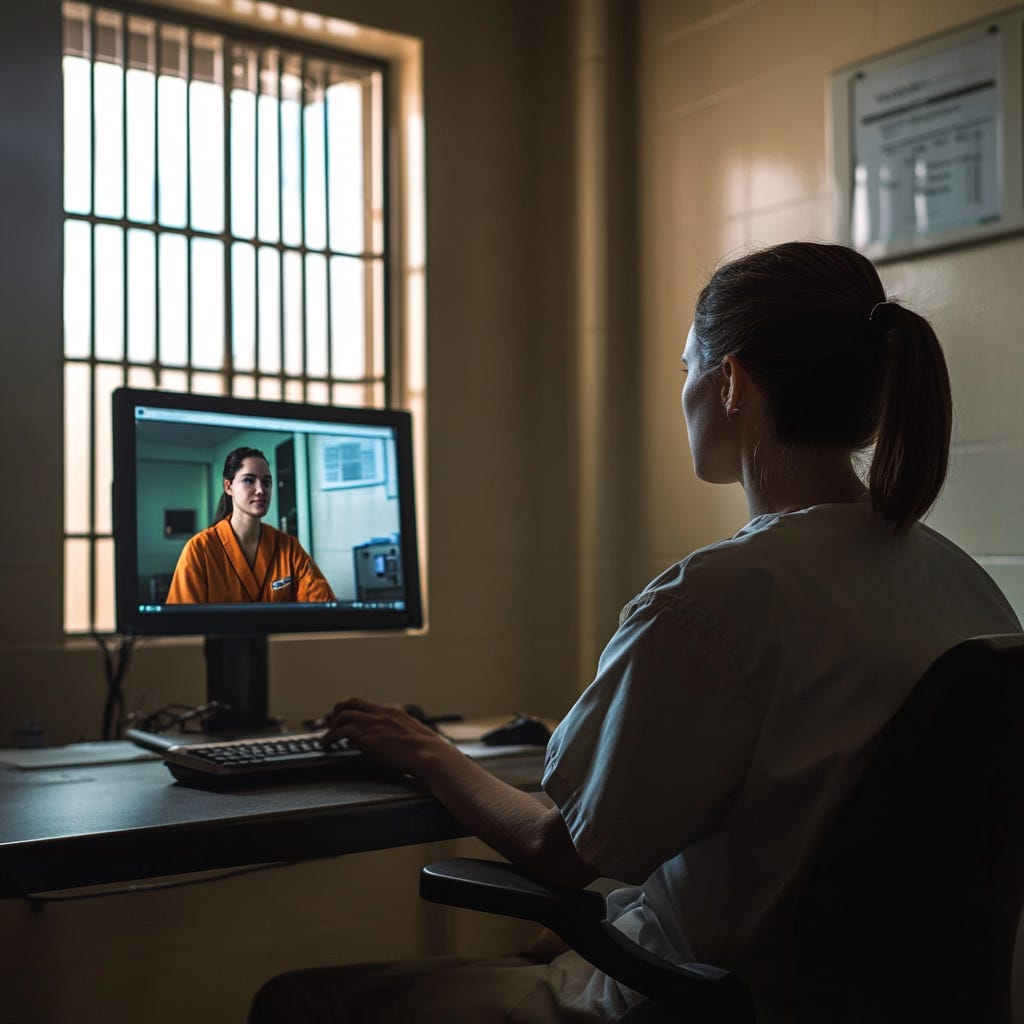Bridging Gaps: The Impact of Telemedicine in Prisons and Public Healthcare
TL;DR
Improved Access and Efficiency: Telemedicine offers prisoners enhanced healthcare access, reducing the logistical challenges and costs associated with transporting inmates for medical appointments, thus streamlining the delivery of care.
Positive Health Outcomes: Studies indicate that telemedicine facilitates more frequent communication between prisoners and healthcare providers, leading to better management of chronic conditions, such as diabetes, with measurable improvements in health metrics.
Cost Savings: Implementing telemedicine in prison systems can significantly lower healthcare expenses, with reports showing potential savings of up to 42% by minimizing travel and security costs associated with in-person visits.
Accessing healthcare in remote or isolated places can sometimes be difficult or impossible. This is especially true inside prisons, where it consumes many resources to move people around for medical appointments. These can include assigning additional prison guards, extra transportation costs, and the time to complete each prisoner’s care. Traditionally, prisoners only had access to in-person medical appointments, which took place off-site. Today, prisoners have more choices when accessing healthcare, thanks to telemedicine.
With every prisoner receiving medical care, it is important to find more efficient ways to provide their care. Telemedicine has been used within prisons and the healthcare system at large since the early 2010s as mainly remote psychiatric treatment. It has since evolved to provide all kinds of medical care remotely to patients in need. This is typically performed via a video conference with the healthcare provider and can require specialty equipment to complete medical exams.
Following the pandemic, telemedicine has become a safer option to deliver care, as you cannot spread disease through a video chat. With quicker access to care, lower costs, and faster processing of prisoners, it is easy to see why many prisons and public healthcare systems now use telemedicine to provide care.
This is especially true when specialty care is needed. The majority of patients reported that the ability to choose telemedicine contributed to their overall personal well-being and safety by eliminating travel time to the hospital and reducing the risk of COVID-19 exposure during the pandemic. Prisoners also reported that they preferred not to go through strict security protocols, including strip searches and shackling. Prisons are isolated much like rural communities are. A report from the National Library of Medicine states that while more research is needed to probe the benefits of telemedicine for rural areas, it mentions that telemedicine models were associated with positive outcomes for patients and healthcare practitioners in these areas.
Telemedicine is improving health outcomes for prisoners by allowing more frequent communication with their practitioners. This improvement in continuity of care will allow for more efficient medical care for prisoners who would have to wait longer for an in-person visit. This speeds up the delivery of care where preventative measures are more effective in preserving health. It can also lead to identifying significant health decline in patients with precarious conditions, such as those with diabetes. Multiple chart reviews showed improvements in blood sugar, blood pressure, and cholesterol for diabetic patients. There was an average drop in patients’ Hemoglobin A1C (a test of how well diabetes is controlled) by 0.5–1.3% after one or two telemedicine visits. With more research to be done on the effect of telemedicine on health outcomes for various diseases, it is exciting to see some positive results from studies that are being done today.
Cost is an ever-constant and considerable factor for prisons, and transporting prisoners to medical appointments off-site can add up. Care provided outside an inmate’s home facility entails significant travel expenses, particularly because at least two correctional officers must accompany the patient throughout the entire visit. By eliminating outside travel and additional security requirements, telemedicine visits were notably less costly, especially when long travel distances were avoided. Savings were also more evident for facilities requiring long travel times. According to this report of a 55-facility North Carolina prison system, there was a potential cost savings of 42% when telemedicine was implemented.
As with anything new, there are some challenges and considerations when implementing telemedicine. Firstly, the implementation cost of telemedicine programs is high. A North Carolina 55-facility prison system estimated the cost to be around $500,000. However, this cost is only incurred once and it should save the facility money over time. There may also be difficulties with technology or equipment that can lead to delays in care. Certain specialties may also have difficulties in performing accurate assessments remotely (cardiology, OBGYN). This may be a gap in our current technology, but with well-trained operators helping providers with assessments, this could be overcome.
Telemedicine has brought better access to healthcare for our isolated communities and prison systems. Its popularity has deepened with the onset of the COVID-19 Pandemic and it is a vital tool for most health practitioners today. Telemedicine decreases the cost of care by reducing unnecessary travel and security costs. It may also provide better health outcomes for patients because they are in more frequent contact with their medical practitioners. As technology advances, so too will the impact of telemedicine on clinical care as it continues to evolve, grow, and innovate.





